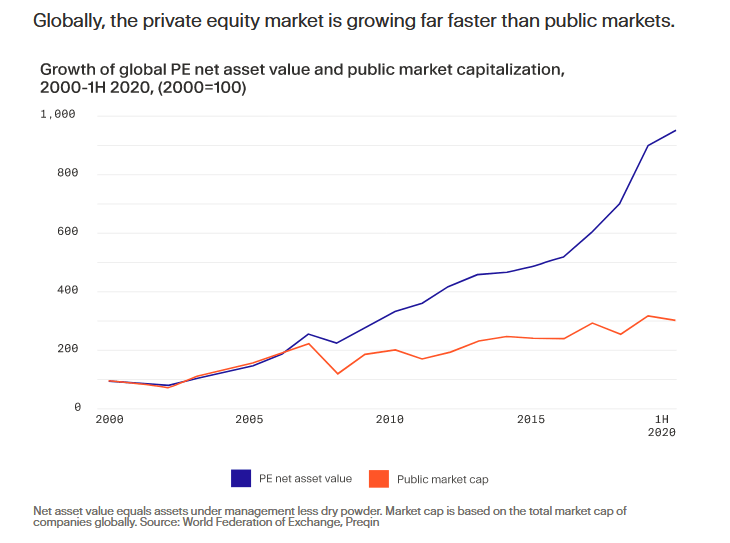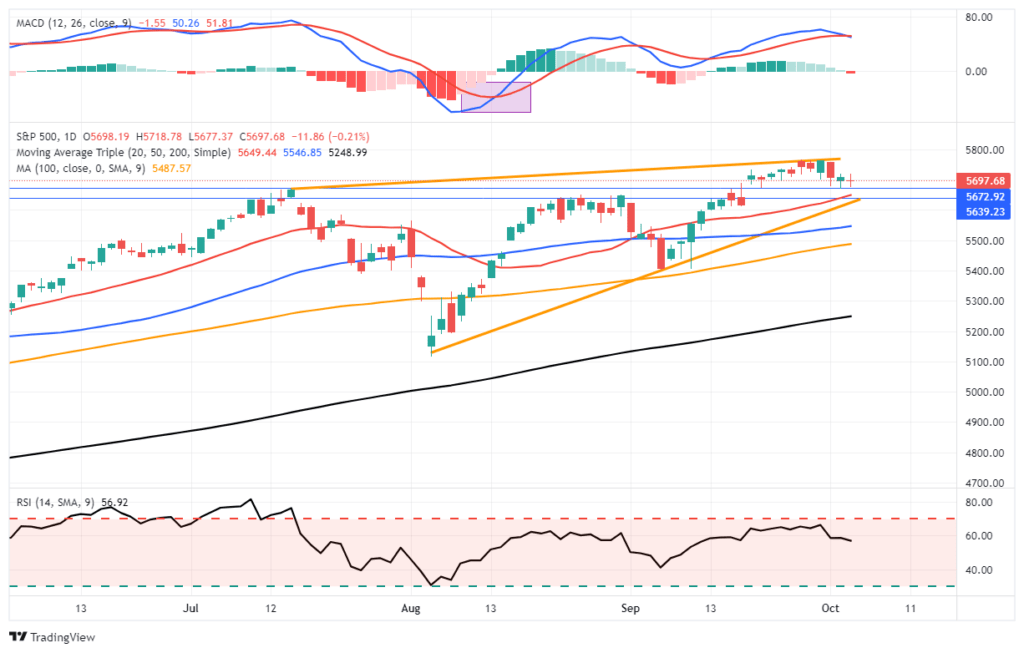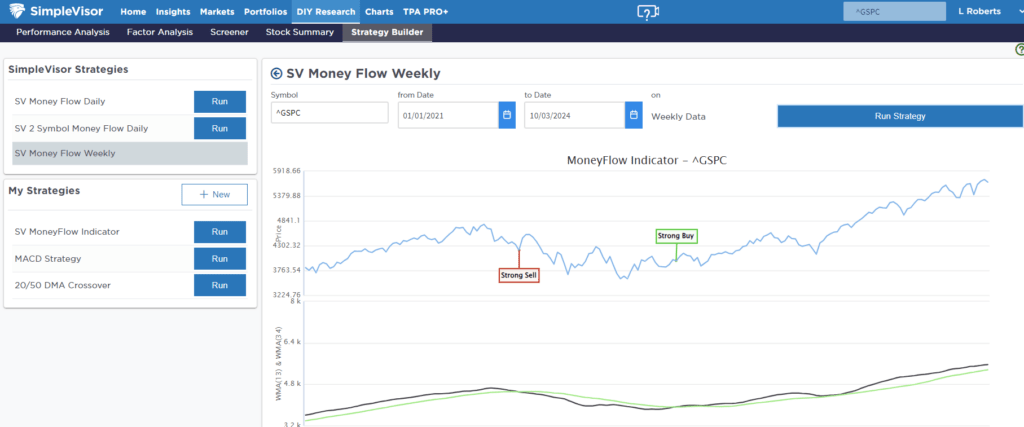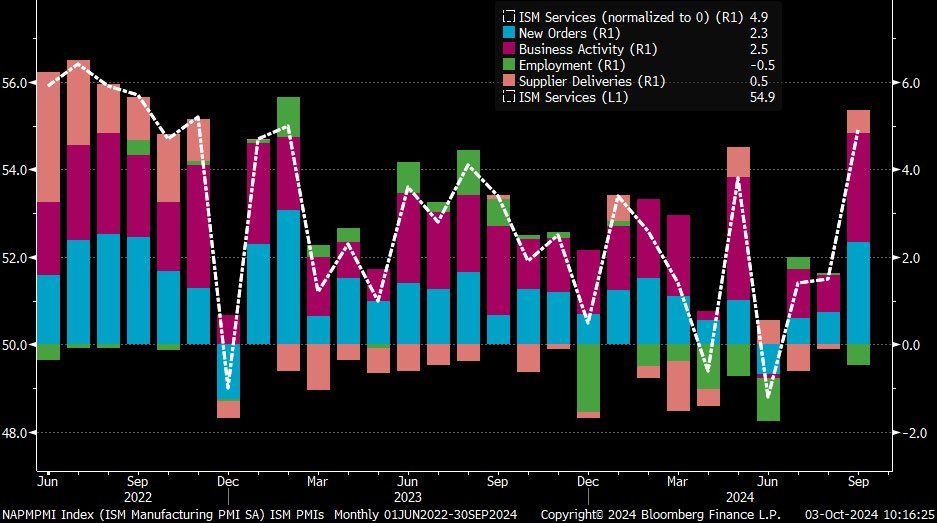The number of publicly listed U.S. companies has significantly decreased, from 7,300 to 4,300 in the last 30 years. At the same time, the number of private companies has risen fivefold.
Per a Bloomberg article entitled The Stock Market Is Becoming A Dumping Ground, Jamie Dimon attributes the decline in the number of public companies to “increasingly burdensome regulation, intensifying public scrutiny and a growing obsession with short-term financial results.” Not only is it more challenging to operate a publically traded company for the reasons Dimon lists, but private capital has become a much more significant funding source. The graph below, courtesy of Moonfare, shows that the total market cap of public companies has risen marginally on a global basis. Compare that to the significant growth of private equity firms.
The ongoing shift from public to private should raise concern for individual investors. Most individuals can not invest in private equity funds due to SEC wealth requirements. Additionally, most 401k retirement plans don’t offer private equity options. This leaves a large percentage of individuals limited to investing in public companies. If newer companies with outsized growth prospects are more incentivized to stay private versus going public, individual investors, by default, are stuck with slower-growth companies. Per the Bloomberg article mentioned above:
Look at the Russell 2000 Index, probably the best-known tracker of small public companies. In 1995, the index’s profitability, as measured by return on equity, was 7.8%. It has trended lower ever since, and this year, Wall Street analysts expect an ROE closer to 2.4%. The same trend is apparent when looking at other measures of profitability, including return on capital or assets.
What To Watch
Earnings
- No notable earnings releases today.
Economy
Market Trading Update
Yesterday, we touched on some interesting commentary from Sentiment Trader on the surge in Gold prices. In the meantime, stocks have finally given in to some selling pressure over the last couple of days as the market retreated to retest support at the previous market highs. The more important development was the triggering of the short-term “sell signal,” which suggests that we could continue to see pressure on the markets heading into the election.
However, it is worth noting that the selloff so far has been mild and was running in front of today’s employment report that will likely confirm the Federal Reserve’s next move. If the employment number is very strong, it may disappoint market participants who are hoping for an additional 50-bps rate cut in November. However, a too weak number could concern investors about the potential for sharper economic contraction. Like Goldilocks, the number must be weak enough to support a 50-bps rate cut but not too weak to raise recession fears.
While the short-term market outlook is mixed, the longer-term trend remains bullish, as shown by our SimpleVisor Weekly Money Flow indicator. That indicator remains on a solid buy signal and does not indicate bearish market risk over the next few weeks. As shown, the last buy signal was triggered in mid-January 2023, and despite some bumps along the way, has kept portfolios allocated toward equity risk.
The next week will likely determine the markets next direction, so continue to manage risk accordingly.
ISM Services Jump
The ISM services sector survey jumped this past month to 54.9, indicating robust economic activity. At 54.9, ISM services are at the highest level since February 2023. Price paid also increased, rising to 59.4 from 57.3 last week. The only fly in the ointment was the employment index, which fell into contractionary territory at 48.1. As you may recall, the ISM manufacturing employment figure dropped to 43.9 from 46. Could the economy be accelerating while job growth slows? Such an instance would certainly be uncommon, but we have seen far stranger things over the past four years.
Oil Prices Surge On Israeli Threats
Only a few days ago, oil prices were breaking down as OPEC leading countries showed signs of disagreement and the global economy appeared to weaken. Oil prices reversed course over the last few days as Iran struck back at Israel with a barrage of rockets. Now, the concern is what Israeli retaliation will look like. It appears, based on comments from President Biden, attacks on Iran’s energy infrastructure are being discussed.
Iran is the world’s seventh-largest oil producer and the third-largest OPEC producer. If they had to shut down production, Saudi Arabia and other countries would not likely be able to make up Iran’s missing supply. Furthermore, if Israel were to target Iranian oil production, would Iran strike out against Saudi and Kuwaiti oil production facilities? Given oil prices are “only” up less than 10% over the past few days, the market seems to be discounting a widespread attack on Iranian oil and escalation to other countries. However, caution is warranted as market opinions can change on a dime.
Tweet of the Day
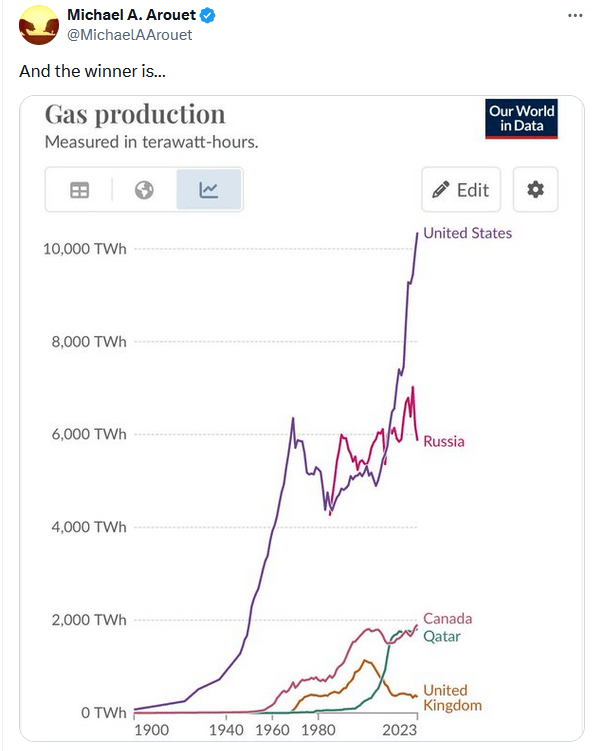
“Want to achieve better long-term success in managing your portfolio? Here are our 15-trading rules for managing market risks.”
Related: The Importance of Context: A Crystal Ball Won’t Cut It



